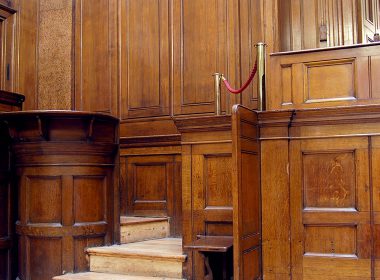Snapshot
- A broad and flexible new provision is available to Aboriginal Land Councils and the State of NSW to negotiate Aboriginal Land Agreements (ALAs) in relation to land under claim.
- ALAs may deal with and resolve multiple land claims within one negotiation without any need to determine ‘claimability’ by reference to the criteria under section 36 of the Aboriginal Land Rights Act.
- ALAs may make provision for Aboriginal Land Councils to withdraw land claims or even to agree never to claim certain specified lands again – to contract out of a statutory right. (legal practitioners will need to ensure that Aboriginal Land Councils fully understand the implications of this and the risks involved).
The Aboriginal Land Rights Amendment Act 2014 (’amending Act’), which commenced on 1 July 2015, amended the Aboriginal Land Rights Act 1983 (’ALRA’), introducing a number of significant and interesting provisions, including, inter alia, Aboriginal Land Agreements (‘ALAs’).
This article focuses on ALAs and does not cover the other provisions introduced by the amending Act.
Background – Aboriginal land claims in NSW
The Aboriginal Land Rights Act 1983 (NSW) is beneficial and remedial legislation, having been enacted to provide compensation to Aboriginal people for past dispossession.
Aboriginal Land Councils are statutory corporations established under the Act and can make land claims over Crown land. As noted by Mason P in ‘Wagga (CA)’, the land claims process is the ‘primary mechanism’ to give effect to the purposes in s 3 of the ALRA by enabling Aboriginal Land Councils to claim limited categories of Crown land (New South Wales Aboriginal Land Council v Minister Administering the Crown Lands Act [2007] NSWCA 281 at [20]).
The New South Wales Aboriginal Land Council (’NSW ALC’) is the peak Aboriginal land rights organisation in NSW, and can make land claims in its own right or on behalf of Local Aboriginal Land Councils (‘LALCs’) (s 36(2) ALRA).
There are 120 LALCs in NSW constituted under the ALRA. One or more LALCs may claim land jointly within their area, or with the approval of the Registrar of the ALRA, outside their area. In practice, the majority of land claims are made by NSW ALC in its own right or on behalf of LALCs.
LALCs also make a significant number of land claims in their own right, but it is unusual for LALCs to claim land outside of their area or to claim land with other LALCs.
Once lodged, a land claim must be determined by the Crown Lands Minister, who must have regard to the statutory criteria in s 36 of the ALRA as at the date of the claim. Pursuant to s 36(1) of the ALRA, in order for a land claim to succeed, the land must be vested in Her Majesty, and be lands that:
- are able to be lawfully sold or leased, or are reserved or dedicated for any purpose, under the Crown Lands Consolidation Act 1913 or the Western Lands Act 1901;
- are not lawfully used or occupied;
- do not comprise lands which, in the opinion of a Crown Lands Minister, are needed or likely to be needed as residential lands;
- are not needed or likely to be needed for an essential public purpose;
- do not comprise lands that are subject to an application for a determination of Native Title (other than a non-claimant application that is unopposed) that has been registered in accordance with the Commonwealth Native Title Act; and
- do not comprise lands that are the subject of an approved determination of Native Title (within the meaning of the Commonwealth Native Title Act), other than an approved determination that no Native Title exists.
If the land under claim satisfies all of the above criteria, the Crown Lands Minister has no discretion and must transfer the land to the claimant land council in fee simple. In some circumstances the transfer may be subject to conditions: see for example s 36(5A) ALRA.
At present there are around 28,000 outstanding land claims awaiting assessment and determination by the Crown Lands Minister. Aboriginal Land Councils often have to wait many years, sometimes decades, to have their claims determined.
In Jerrinja, Jagot J commented that no ’land council should have to wait for 20 years for its land claim to be determined’ and ’a delay of 15 to 20 years in determining claims does not accord with any idea of reasonableness’ (Jerrinja Local Aboriginal Land Council v Minister Administering the Crown Lands Act[2007] NSWLEC 577, at [124]–[125]).
At the current rate of determination, if using s 36 of the ALRA alone, it would take many decades for the Crown Lands Division of Department of Primary Industries to assess, and the Crown Lands Minister to determine the backlog of land claims.




